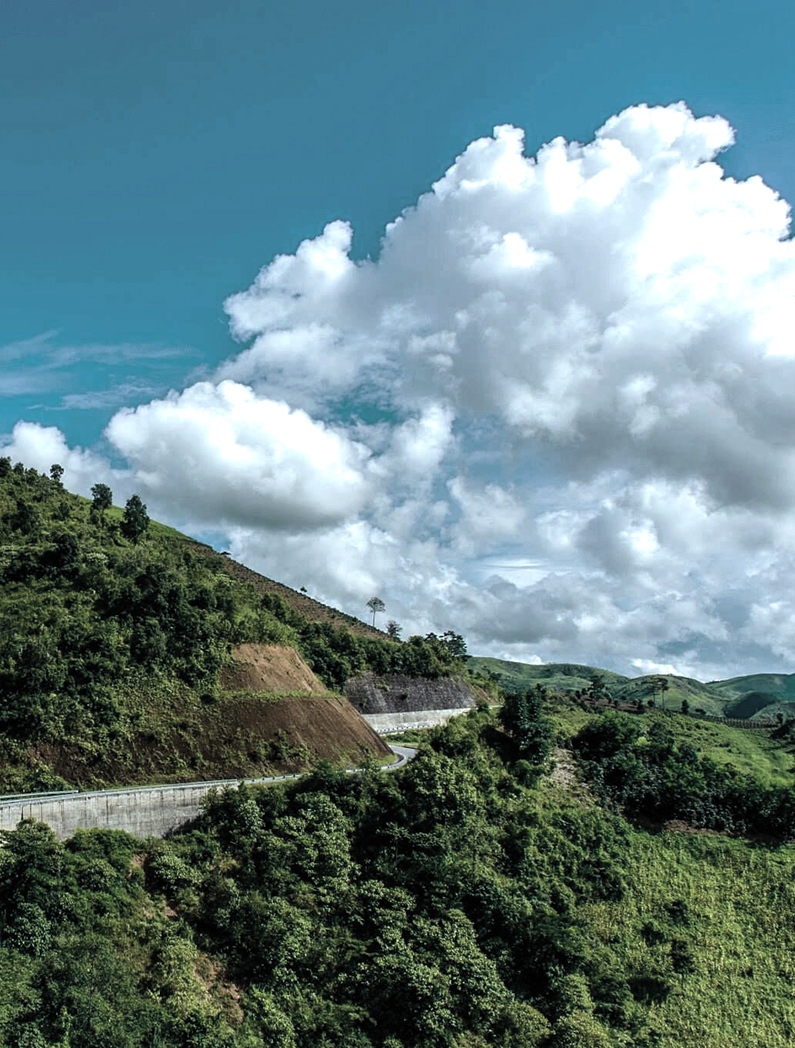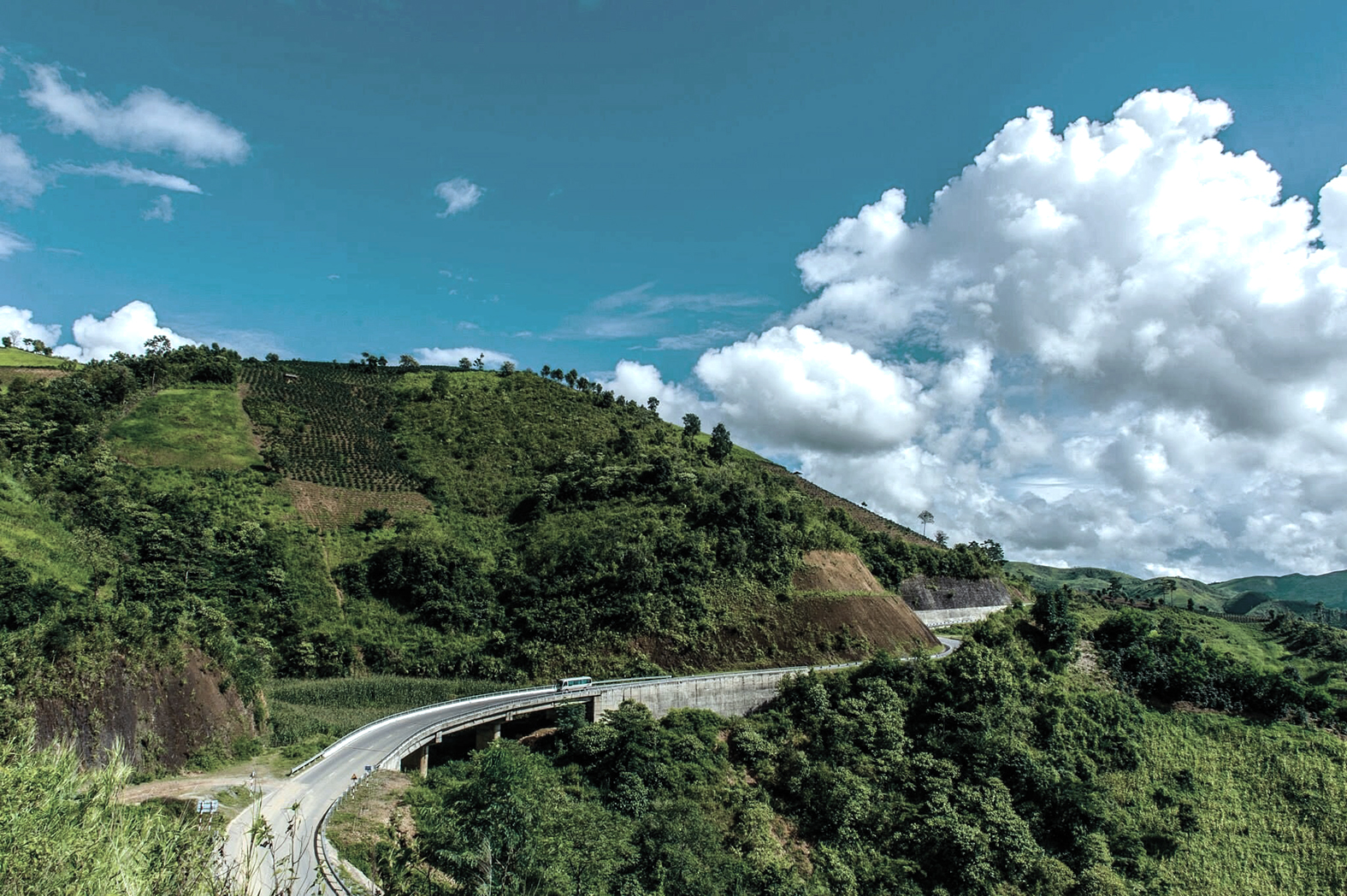Nine Tripods of the Nguyen DynastyThe Nine Urns were ordered to be built by King Minh Mang in late 1835, inaugurated on March 1, 1837 and placed in front of The Mieu courtyard in the Imperial City of Hue. Each urn has 3 floors; the middle floor is considered the center of communication, so it has images of heaven, earth and people. In total, the Nine Urns have 18 embossed figures. Among them, there are also images of 9 mountains of the country, which have special meaning to the Nguyen Dynasty.
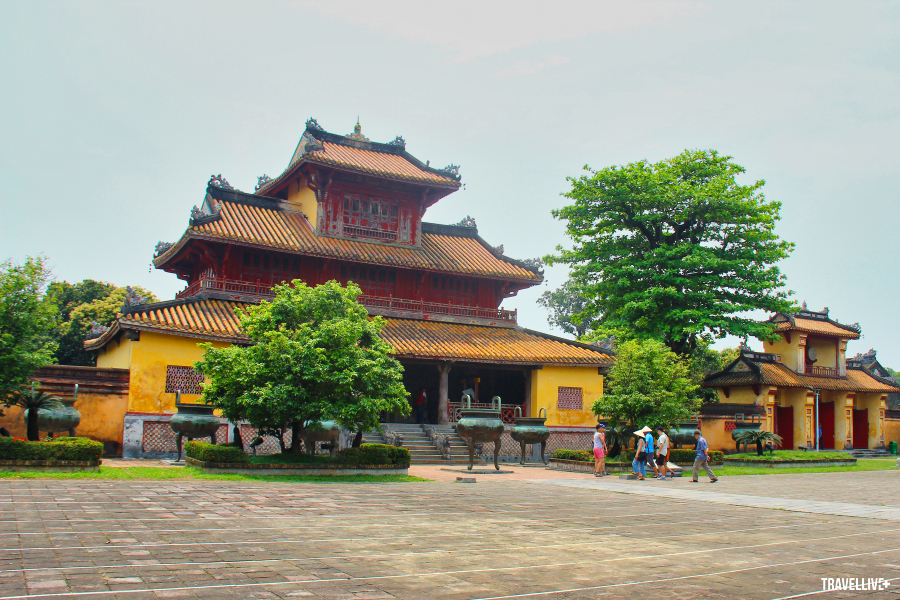
Nine urns placed in front of The Mieu Temple yard, Hue Citadel
1. Thien Ton Mountain (Thanh Hoa): touches the top of Cao Dinh

The mountain also has another name, Trieu Tuong mountain, located in Ha Long commune, northwest of Ha Trung district, Thanh Hoa. This land was formerly called Gia Mieu foreign page, which is the birthplace of the Nguyen dynasty.
This is a sacred mountain for the Nguyen Dynasty. Legend has it that the tomb of Trieu To Nguyen Kim was buried on this mountain. In 1803, King Gia Long built Truong Nguyen mausoleum to worship Trieu To Nguyen Kim at the foot of the mountain.
Regarding the name Thien Ton, there are documents stating that in 1821 (the 2nd year of Minh Mang), King Minh Mang issued an edict "conferring the name of the mountain god to Thien Ton". There is also another legend that says that in the past, Nguyen Kim was poisoned to death by Duong Chap Nhat, posthumously awarded the title Chieu Huan Tinh Cong by King Le and was brought back to Trieu Tuong mountain for burial. When the coffin was placed in the grave, there was thunder and rain, causing everyone to flee down the mountain. When the sky cleared, the grave had disappeared, only the rocky mountain and lush vegetation could be seen. From then on, the mountain was named Thien Ton.
2. Ngu Binh Mountain (Hue): carved on Nhan Dinh
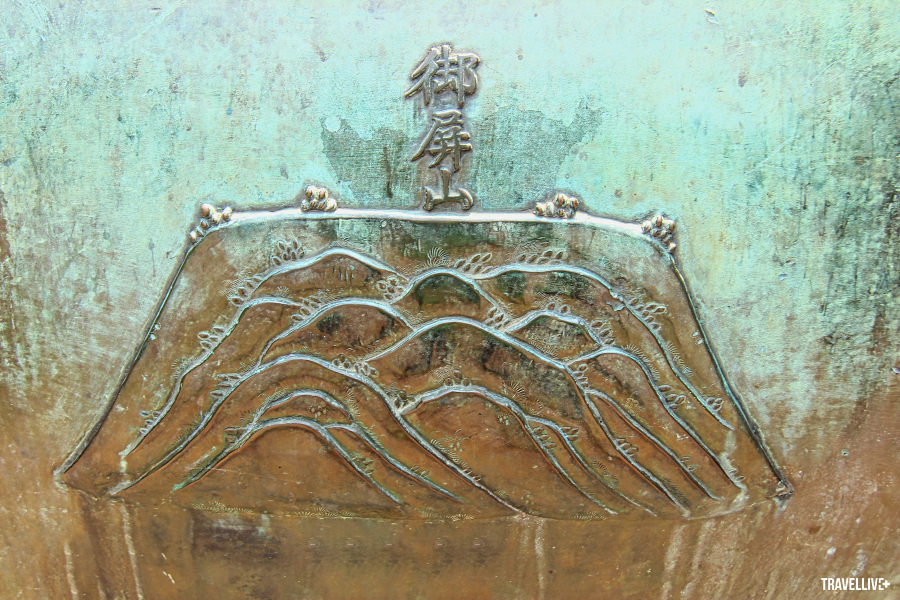
Ngu Binh mountain on Nhan Dinh
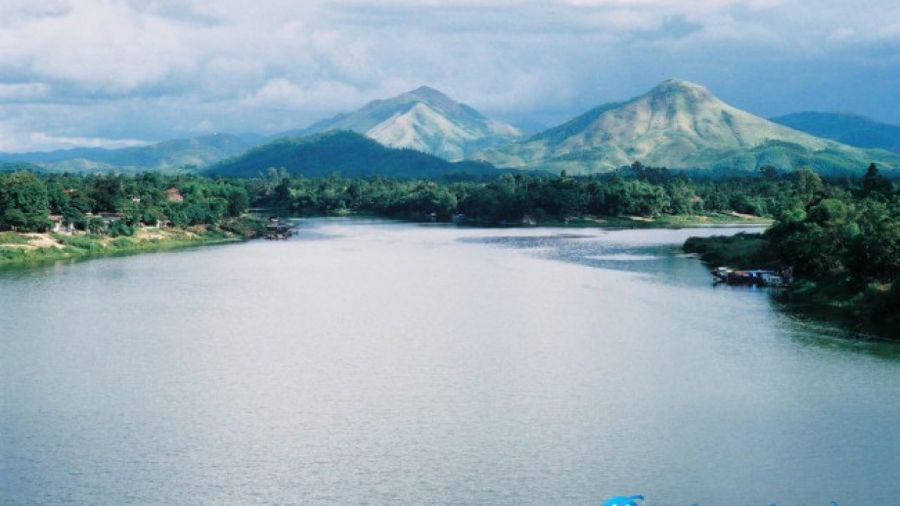
Ngu Binh Mountain used to belong to Huong Thuy district, now belongs to An Cuu ward, Hue city (photo: Internet)
BookDai Nam Nhat Thong ChiRecorded: "In the northeast of Huong Thuy, rising up on a flat land like a screen forming the first layer of the screen in front of Hue Citadel, commonly called Bang Mountain, under Gia Long dynasty it was given the current name (Ngu Binh), the mountain top is flat, pine trees are planted everywhere".
Because of its special shape and location, Ngu Binh mountain played a very important role in feng shui for the Nguyen lords and later King Gia Long. As early as July 1687, when Nghia Vuong Nguyen Phuc Tran moved his palace from Kim Long village to Phu Xuan village, he used Bang mountain as a screen in front of the capital. Later, when King Gia Long planned to build Hue Citadel (1805), he also used this mountain as a screen for the Citadel.
Legend has it that since the reign of King Gia Long, every mandarin had to plant a pine tree on Ngu Binh Mountain, so after many kings, Ngu Binh became a green pine forest. Together with the Perfume River, Ngu Binh Mountain has created a charming landscape and has long been a natural symbol of Hue.
3. Thuong Mountain (Hue): carved on the top of the mountain
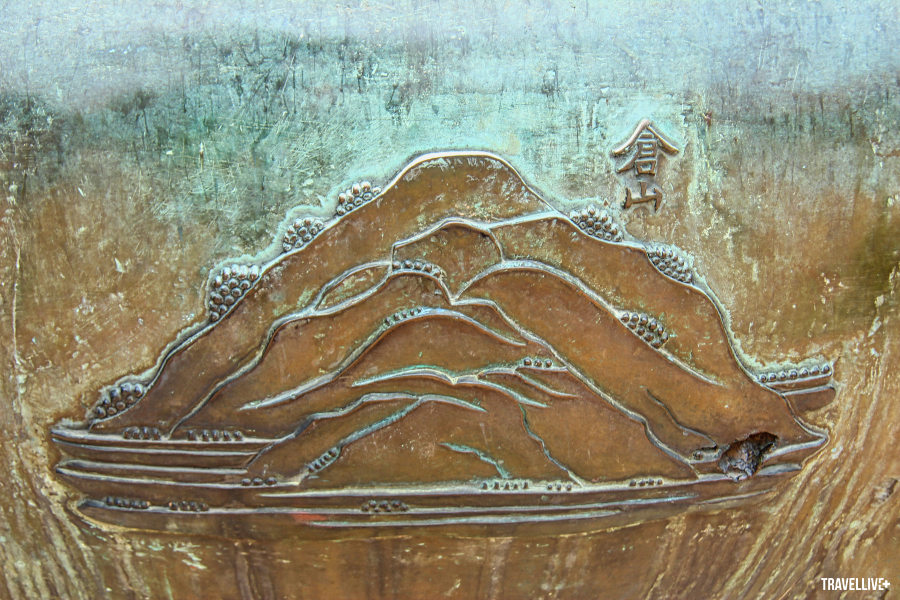
Thuong Son on Truong Dinh
The mountain is located in Huong Tra district, is the highest mountain in the ancient capital of Hue, has a pointed shape like a rice mound (“thuong” means “rice/rice barn”), so the mountain also has other names such as Dun Son, Hon Don. In addition, the mountain also has the name Thien Duu or Kim Phung.
Thuong Son is a famous mountain, ranked by many feng shui experts as the main mountain of the entire Hue mountain range system. From the top of the mountain, you can observe the whole view of Hue city with the winding green Huong River.
4. Hong Mountain (Hong Linh Mountain): touches the top of Anh Peak
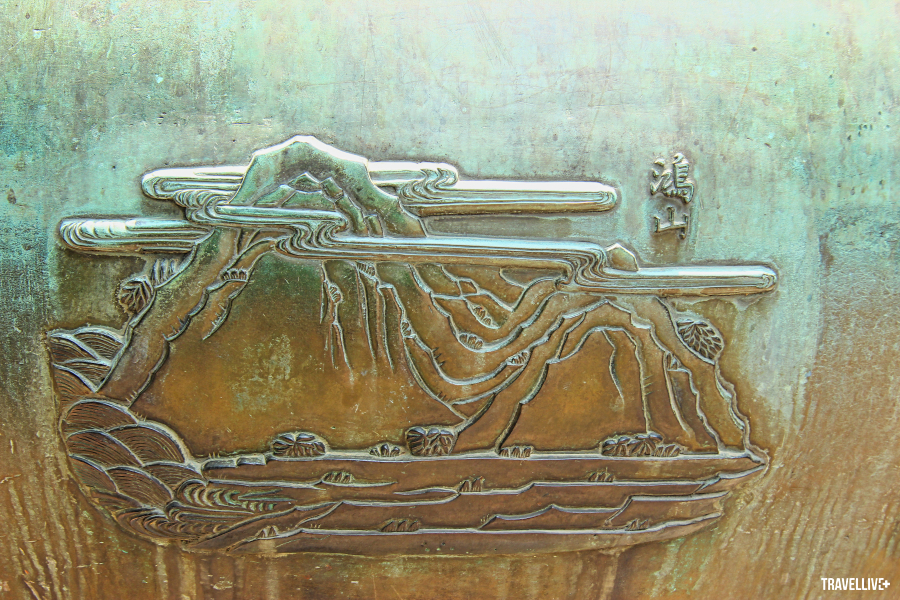
Red Mountain on the British Summit

Hong Linh mountain range seen from afar (photo: Internet)
Hong Linh Mountain is the most majestic and famous mountain range in Ha Tinh. The name Hong Mountain comes from "Chim Hong" Mountain, because in the past there were many hong birds on it. This mountain range has dozens of peaks ranging from low to high, up to nearly 700 meters. In the mountain there are also many large caves, such as Da Hang Cave, Ham Rong Cave, etc.
In addition, on the mountain there are many famous temples, pagodas and shrines, including Huong Tich Pagoda, located halfway up Huong Tich peak, at an altitude of about 650 meters - once ranked as one of the most famous landscapes in Hoan Chau.
5. Tan Vien Mountain (Ba Vi): carved on Thuan Dinh
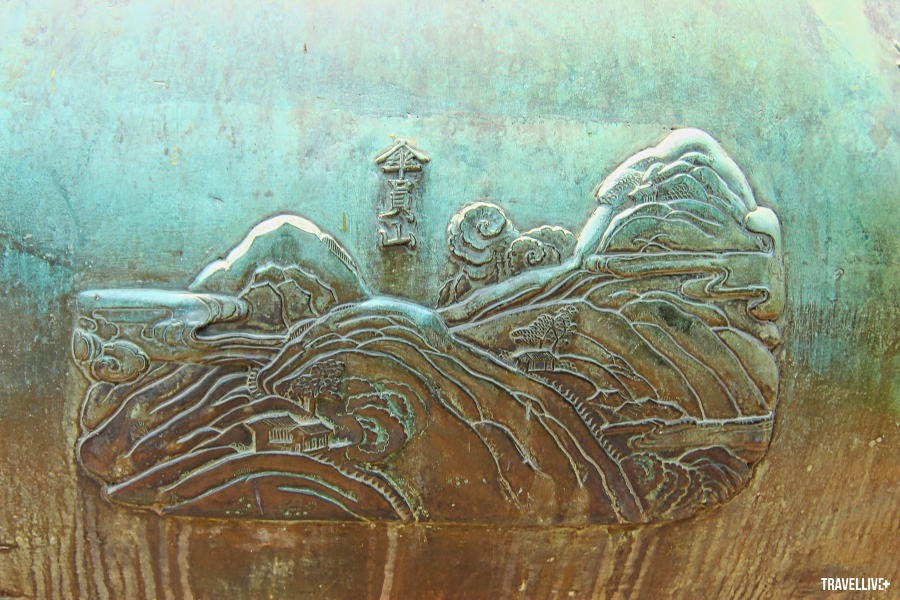
Tan Vien mountain on Thuan Dinh
Tan Vien Mountain is the most famous mountain of the Ba Vi mountain range - located between Ba Vi district (Hanoi) and Ky Son district (Hoa Binh) today. Of the three peaks of the Ba Vi mountain range, Tan Vien peak is 1,227 meters high, although not the highest peak (King peak is 1,296 meters high and Ngoc Hoa peak is 1,131 meters high) but is the most famous peak.
According to legend, this is the residence of Saint Tan Vien, also known as Son Tinh, the Mountain God in the legend of Son Tinh - Thuy Tinh, and also the leader of the four "immortal" saints of Vietnamese folklore (Saint Tan Vien, Holy Mother Lieu Hanh, Saint Giong, Saint Chu Dong Tu).
At Tan Vien mountain, there are 3 very sacred temples, located at the top, slope and foot of the mountain, namely Thuong, Trung and Ha temples. In 1850, during the reign of King Tu Duc, Tan Vien was ranked among the famous mountains, and every year the royal court prepared offerings to worship the Mountain God.
6. Due Mountain (Hue): carved on the Tuyen Dinh
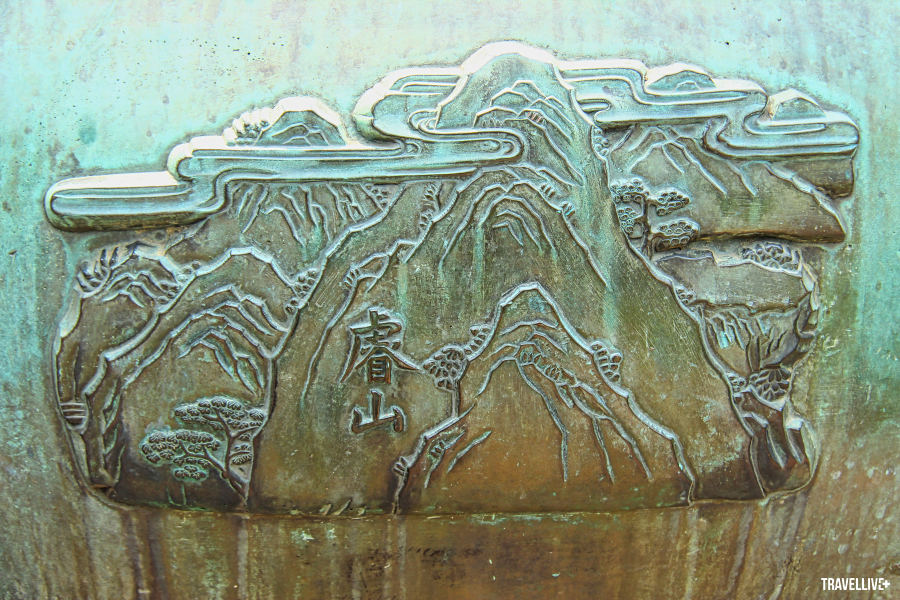
Due Son on Tuyen Dinh
BookDai Nam Nhat Thong ChiBriefly written about the mountain: “Located in the south of Huong Tra district, sharp and beautiful, next to the source of Ta Trach in the southeast. In the 17th year of Minh Mang, the Nine Tripods were cast, and the statue was carved into the Tuyen Tripod. In the 20th year, the mountain god was worshipped.”
Due Mountain, together with Thuong Mountain and Ngu Binh Mountain, are considered the main mountains that gather the spiritual energy of Hue. Among them, Due Mountain is like a guardian god, standing at the source of the Huong River, protecting the land where the Temple of Literature and the Temple of Martial Arts are located.
7. Dai Lanh Mountain: carved on the summit

Dai Lanh mountain on Tuyen Dinh
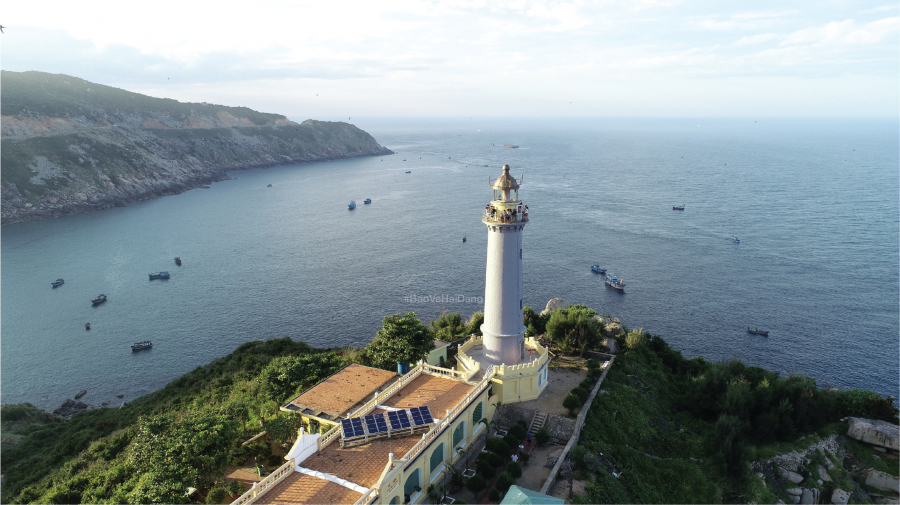
Dai Lanh Lighthouse today (photo: Internet)
Dai Lanh Mountain is located between Phu Yen and Khanh Hoa provinces, a branch of the Truong Son range extending out to sea. On the rocky cape that juts out far into the sea, the French built a lighthouse at the end of the 19th century. In addition, this place is also the A8 point of the baseline to calculate the width of the territorial waters of mainland Vietnam.
Thus, the Tuyen Dinh was carved with two mountains, while the Nghi Dinh was not allowed to be carved with any mountains by King Minh Mang.
8. Hai Van Mountain (Thua Thien-Hue): carved on Du peak
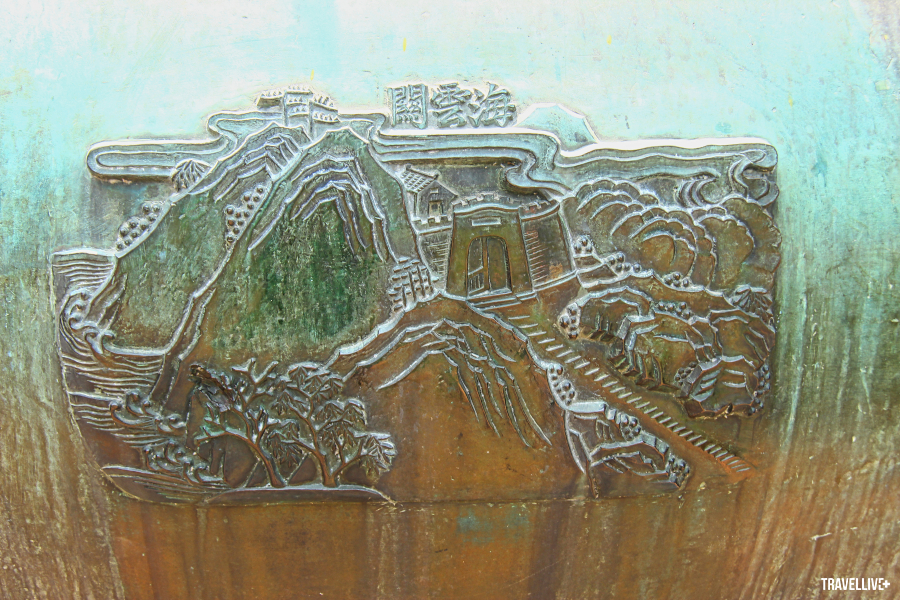
Hai Van Pass on Du Peak

Hai Van Quan, also known as the First Great Pass (photo: Internet)
Hai Van Quan is carved on the Du Dinh, bearing the image of the Hai Van mountain range in the southeast of Phu Loc district, Thua Thien-Hue province. On the top of the pass of the Hai Van mountain range, a gate is built at an altitude of more than 496 meters above sea level. The front gate is inscribed with "Hai Van Quan", the back gate is inscribed with "Thien ha de nhat hung quan" (The most majestic pass under the sky).
The gate was built in the 7th year of Minh Mang (1826), initially with one defense officer, but in the 17th year (1836) it was increased to two defense officers, with the task of monitoring and observing the situation at sea. If foreign ships were discovered entering the Da Nang seaport, they had to notify this gate official in advance.
BookDai Nam Nhat Thong ChiRecorded: “Hai Van Mountain is the border between Quang Nam and Thua Thien provinces. Previously, the border in Thach Ban and the North of the pass was engraved on wooden markers. When the gate was built on the pass, it was determined that from the gate to the North belonged to the jurisdiction of Thua Thien province, and from the gate to the South belonged to the jurisdiction of Quang Nam province.”
9. Hoanh Mountain: carved on Huyen Dinh
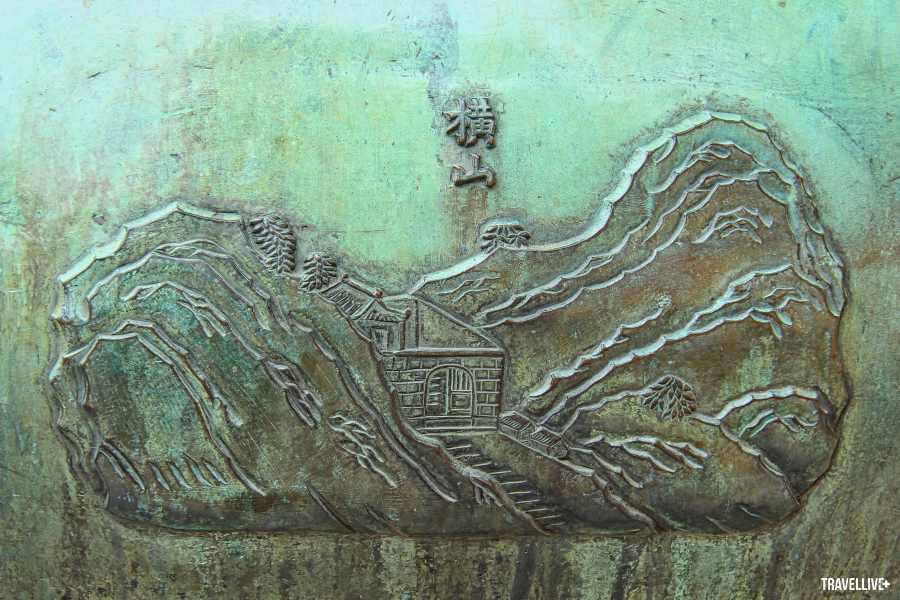
Hoanh Son on Huyen Dinh
Hoanh Son, also known as Ngang Mountain, is a mountain range that divides the border between Quang Binh and Ha Tinh provinces, and has the famous Ngang Pass in poetry. This is also a mountain range that runs from the West all the way to the sea.
Hoanh Son has a special position for the Nguyen Dynasty, because when Lord Nguyen Hoang was still in Thang Long, wanting to escape from the control of Trinh Kiem, he secretly sent someone to ask for advice from Trang Trinh Nguyen Binh Khiem. Trang Trinh only said: "Hoanh Son nhat dai, van dai dung than" (meaning: a strip of Hoanh Son can shelter people forever). Thanks to that, Nguyen Hoang was able to find a way to ask to be allowed to guard Thuan Hoa, build a solid foundation, expand the country to the South, creating the premise to open the Nguyen Dynasty.





